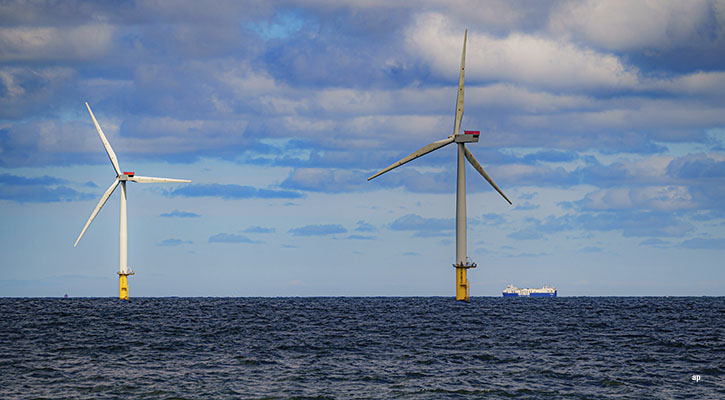
In a recent interview, Ørsted (ORSTED) chief executive Mads Nipper said he was ready to "fight with everything [he has] got" to soothe investor grievances.
The Danish renewable energy company is in hot water after it announced it would cut around 800 jobs and suspend its dividend. The group has also had to back away from two significant US projects, the Ocean Wind I and II schemes, because of rising costs, which pushed the group to a net loss of £2.2 billion.
It also withdrew from offshore wind markets in Norway, Spain and Portugal, as well as putting into doubt the viability of its Hornsea 3 project, which is expected to supply power to over 3.3 million homes in the UK.
Over the three years to February 2024 Ørsted shares have suffered a devastating fall from grace.
Key Morningstar Metrics for Ørsted
• Fair Value Estimate: DKK 540.00;
• Morningstar Rating: ★★★★;
• Morningstar Economic Moat Rating: None;
• Morningstar Uncertainty Rating: Medium.
Its cumulative return rate dropped to 59.01% versus the Morningstar Developed Market Renewable Energy index, which gained 3% over that same period. Its share price is also down by 60.98% from £120.09 to £45.49 over the past three years.
Considering this grim picture, it's worth asking whether institutional backers are buying Nipper's latest intervention. This appears to be a mixed bag.
Who is Buying Ørsted?
Ninety-One Global Environment, which holds the stock at 4.76% of the fund, added an extra 232,135 shares in the company in December last year.
Legal & General PMC Multi Asset Pension upped its stake by 109,956 shares, meanwhile Scottish Widows SSgA Europe Ex UK Equity Index and WS Macquarie Global Infrastructure Securities added 54,758 and 22,805 shares, respectively.
Morningstar Analyst, Tancrede Fulop, has assigned the stock a Morningstar Star Rating of 4. He is not concerned about the current pessimistic outlook.
"The new investments and 2024, 2026, and 2030 EBITDA targets are in line with our estimates, so we confirm our DKK 540 fair value estimate, offering 40% upside to the current share price," he says.
"The farm-down of the Hornsea 3, (selling a stake in an offshore wind farm typically during the construction phase), will be a positive catalyst.
"Furthermore, Orsted is less exposed to declining European wholesale power prices than most European utilities and will benefit from a decline in interest rates," he says.
Who is Selling Ørsted?
However, Baillie Gifford leads the pack in selling the stock. In December 2023 Baillie Gifford Positive Change and Baillie Gifford Multi Asset Growth disposed of 805,523 and 13,409 Orsted shares.
UK pension funds have also sold their shares in the stock, with the Aviva Diversified Assets Pension Fund and the Hamilton Pension Fund shedding 49,819 and 22,962 shares, respectively.
In a statement to The Guardian, RBC analyst Alexander Wheeler says markets expected Ørsted to seek more investor support, which he argues would have dealt with the issues and "removed future risk."
"We now have a period where Ørsted needs to execute on various components of its plan to improve its balance sheet metrics over the medium term," Wheeler says.
Yet, Fulop still believes the worst is over for the company. That's despite his belief the company's business plan will face an uphill battle.
"The business plan will hinge on material divestments and farm downs, and typically the buyers of stakes in offshore wind farms are like financial players," he says.
"Despite the issues there is still appetite from them to buy stakes into the farms and Ørsted badly needs buyers to be able to fund future projects."
























